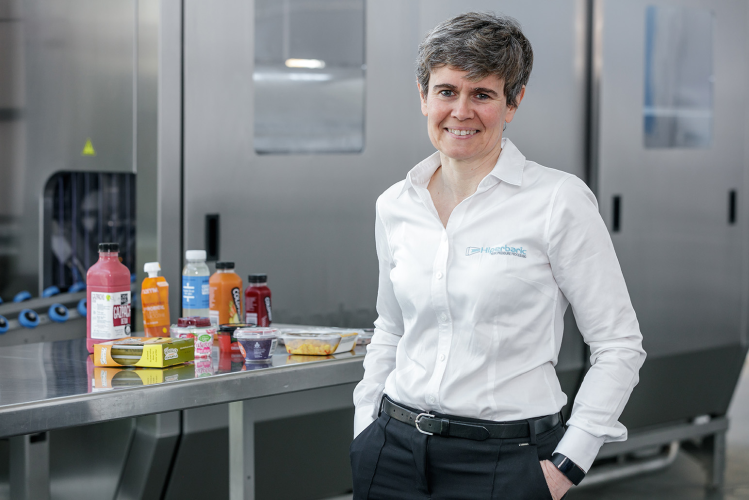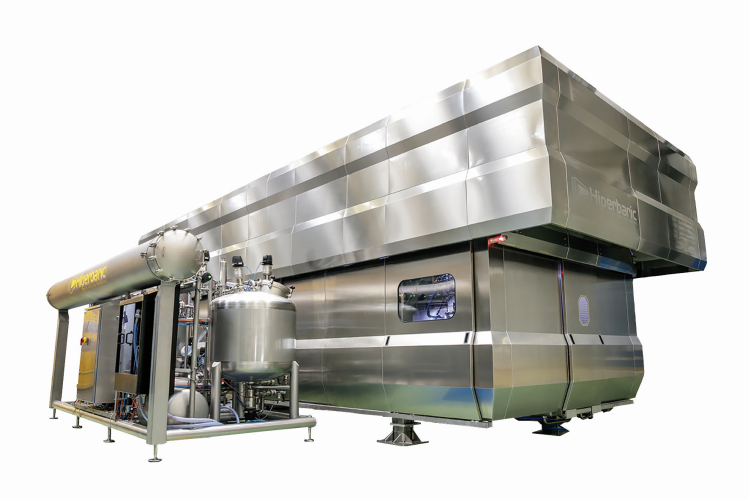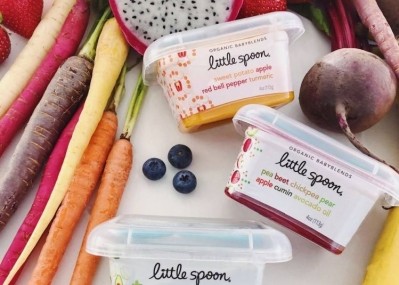HPP for bulk liquids a game changer for beverage market, claims Hiperbaric

Traditionally, during the HPP process, foods or beverages are placed into baskets in their final packaging and put into a high-pressure chamber that is flooded with cold water and pressurized to kill/inactivate bacteria, virus, yeasts, molds and parasites.
HPP enables products to retain the texture, nutrition and taste of homemade food, with no preservatives or added flavors (enabling a cleaner label), and a shelf-life long enough to secure national distribution.
It has become particularly popular in the premium juice segment, as it enables products to retain their ‘freshly squeezed’ attributes.
However, it is an expensive process with relatively low throughput, and has been restricted to products packaged in plastic bottles, pouches, trays, cups, and bags able to withstand high pressure.
Bulk process only works for liquids
By processing liquids in bulk using HPP, firms can handle twice as much product per batch, and then bottle their liquids in any format they choose, from cans to glass bottles, Carole Tonello-Samson, PhD, commercial and applications director at Hiperbaric, told FoodNavigator-USA.
Hiperbaric's new bulk machines are “designed for low-viscosity products, for liquids,” explained Dr Tonello-Samson. “Guacamole or baby food is too thick to be processed in-bulk, at the current stage of the technology.”
The beverage is sent to inlet tank, and fills a recyclable plastic ‘bladder’ inside of the vessel occupying 90% of the total vessel volume before the HPP process begins. Afterwards, the liquid is unloaded into “an ESL (ultraclean, Extended Shelf Life) tank” and can go straight to an ESL filling line/bottling in any kind of packaging material.
First real-scale prototype installed in Spain in 2018
“The Hiperbaric Bulk concept has received great interest in the US, thanks to the versatility and innovation it brings to HPP technology,” claimed Dr Tonello-Samson. “We are in discussions with several potential customers and we are looking to install the first machine in the US in 2020.”
She added: “We launched the Hiperbaric Bulk last September during a demonstration day at the Fruselva company in Spain where our first real-scale prototype was installed during the last part of our R&D project granted by European funds.
“We now have an industrial version of the Hiperbaric 525 Bulk (equipped with a 525 L vessel) which will be installed in France in the coming months. The [larger] Hiperbaric 1050 Bulk machine uses a similar concept, but is equipped with two vessels of 525 L,” said Dr Tonello-Samson, who was speaking to us during the recent IFT show in New Orleans.
‘Several patent-pending innovations…’
Asked about throughput, she said: “The economics are much better with a Bulk machine because of this 90% vessel filling ratio (475 liters of beverage is process / cycle in a vessel of 525 L) and because the machine is fully automatic.
"There is no manual handling of bottles or pouches, and labor costs are reduced by more than 80%. The energy cost per liter of HPPed beverages is also cut by almost 50%, as almost twice the volume of juice is processed per cycle, while spare parts and consumable costs per liter are reduced by more than 30%.
“The 1050 machine doubles the production capacity per cycle, as the filling of the processing chamber is over 90%, which is about double the capacity of an in-pack (regular) HPP machine (about 45%)."
Asked what technological breakthrough had enabled Hiperbaric to be able to process in bulk vs in-package, she said:
“It is not only one technological breakthrough, there are several. The Hiperbaric Bulk machine includes several patent-pending innovations. This is the result of a four-year R&D project granted by the EU involving all our highly qualified PhD and engineering teams, added to the 20 years of industrial experience of Hiperbaric as a manufacturer of HPP machines.”
Previous attempts at bulk HPP processing
But why didn’t HPP begin with in-bulk processing?
“Some competitors developed solutions in the 1990s called ‘semi-continuous’ to process beverages in bulk without packing or bottling,” said Dr Tonello-Samson.
“But the design was completely different than that of our Hiperbaric Bulk. The semi-continuous lines of the 1990s machines were of several small HPP processing chambers equipped with an internal free piston, working in parallel, but the design was wrong and all lines were stopped before 2000 due to the lack of reliability and cleaning problems.”
‘No other competitor offers an in-bulk solution’
Asked to place the technology in context, she added: “For more than 15 years, like our competitors, we have provided some solutions with in-pack machines to process big bags, which our competitor calls bulk bags. This is not new. Big bags have been processed under pressure since guacamole was processed at the end of the 1990s. But this is still an in-pack processing (ie. the product is processed in its final packaging).
“No other competitor offers an in-bulk solution, which means beverages are processed without packaging.”
Watch the Hiperbaric 1050 in action below:












